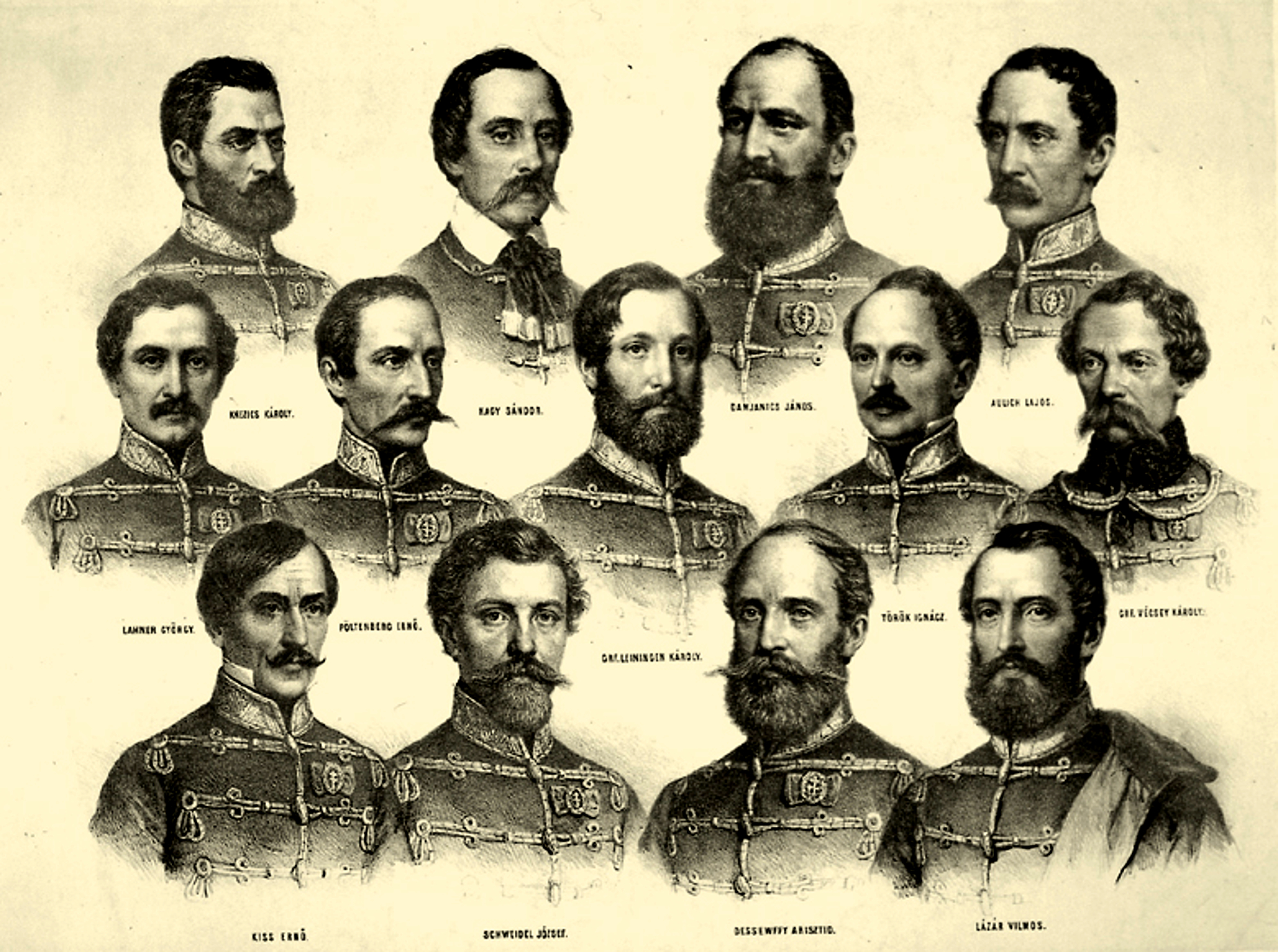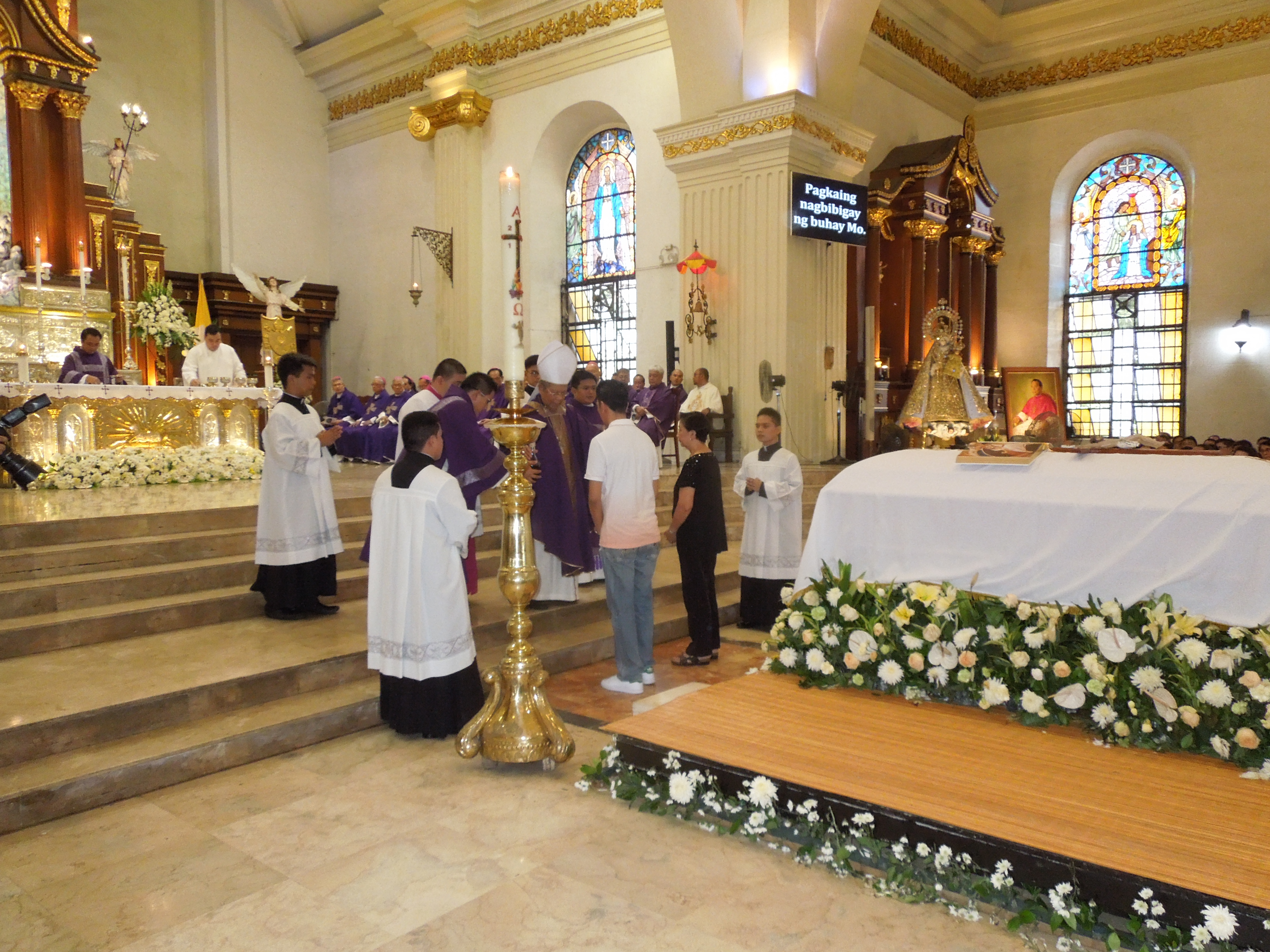|
Antónia Zichy
Countess Antónia Erzsébet Valburga Zichy de Zich et Vásonkeő (Cífer, Kingdom of Hungary, 14 July 1816 – Dáka, Kingdom of Hungary, 25 September 1888) was a Hungarian noblewoman best known as the wife of Lajos Batthyány, the first Prime Minister of Hungary, who was executed for his participation in the Hungarian Revolution of 1848. Life Early life Countess Antónia Erzsébet Valburga Zichy de Zich et Vásonkeő was born into an old Hungarian Aristocracy (class), aristocratic family on 14 July 1816 in Cífer, Kingdom of Hungary (today Cífer, Slovakia). Her father, Count Károly Zichy family, Zichy de Zich et Vásonkeő (1785–1876) served as an imperial and royal Chamberlain (office), chamberlain and was a landowner. Her paternal grandparents were Count Ferenc Zichy (1749–1812) and Countess Maria Anna von Kolowrat-Krakowsky (1753–1805). Her mother was Countess Antónia Batthyány de Németújvár (1789–1825). Her maternal grandparents were Count János Nepomu ... [...More Info...] [...Related Items...] OR: [Wikipedia] [Google] [Baidu] |
Kingdom Of Hungary
The Kingdom of Hungary was a monarchy in Central Europe that existed for nearly a millennium, from 1000 to 1946 and was a key part of the Habsburg monarchy from 1526-1918. The Principality of Hungary emerged as a Christian kingdom upon the Coronation of the Hungarian monarch, coronation of the first king Stephen I of Hungary, Stephen I at Esztergom around the year 1000;Kristó Gyula – Barta János – Gergely Jenő: Magyarország története előidőktől 2000-ig (History of Hungary from the prehistory to 2000), Pannonica Kiadó, Budapest, 2002, , pp. 37, 113, 678 ("Magyarország a 12. század második felére jelentős európai tényezővé, középhatalommá vált."/"By the 12th century Hungary became an important European factor, became a middle power.", "A Nyugat részévé vált Magyarország.../Hungary became part of the West"), pp. 616–644 his family (the Árpád dynasty) led the monarchy for 300 years. By the 12th century, the kingdom became a European power. Du ... [...More Info...] [...Related Items...] OR: [Wikipedia] [Google] [Baidu] |
The 13 Martyrs Of Arad
The Thirteen Martyrs of Arad () were the thirteen Hungarian rebel generals who were executed by the Austrian Empire on 6 October 1849 in the city of Arad, then part of the Kingdom of Hungary (now in Romania), after the Hungarian Revolution (1848–1849). The execution was ordered by the Austrian general Julius Jacob von Haynau. Background In a historic speech on 3 March 1848, shortly after news of the revolution in Paris had arrived, Lajos Kossuth demanded parliamentary government for Hungary and constitutional government for the rest of Austria. The Revolution started on 15 March 1848, and after military setbacks in the winter and a successful campaign in the spring, Kossuth declared independence on 19 April 1849. By May 1849, the Hungarians controlled all of the country except Buda, which they won after a three-week bloody siege. The hopes of ultimate success, however, were frustrated by the intervention of Russia. After all appeals to other European states failed, ... [...More Info...] [...Related Items...] OR: [Wikipedia] [Google] [Baidu] |
Franz Joseph I Of Austria
Franz Joseph I or Francis Joseph I ( ; ; 18 August 1830 – 21 November 1916) was Emperor of Austria, King of Hungary, and the ruler of the Grand title of the emperor of Austria, other states of the Habsburg monarchy from 1848 until his death in 1916. In the early part of his reign, his realms and territories were referred to as the Austrian Empire, but were reconstituted as the dual monarchy of Austria-Hungary in 1867. From 1 May 1850 to 24 August 1866, he was also president of the German Confederation. In December 1848, Franz Joseph's uncle Emperor Ferdinand I of Austria, Ferdinand I abdicated the throne at Olomouc, as part of Minister President Felix zu Schwarzenberg's plan to end the Hungarian Revolution of 1848. Franz Joseph then acceded to the throne. In 1854, he married his first cousin Empress Elisabeth of Austria, Duchess Elisabeth in Bavaria, with whom he had four children: Archduchess Sophie of Austria, Sophie, Archduchess Gisela of Austria, Gisela, Rudolf, Crown Pri ... [...More Info...] [...Related Items...] OR: [Wikipedia] [Google] [Baidu] |
Empress Elisabeth Of Austria
Elisabeth (born Duchess Elisabeth Amalie Eugenie in Bavaria; 24 December 1837 – 10 September 1898), nicknamed Sisi or Sissi, was Empress of Austria and List of Hungarian consorts, Queen of Hungary from her marriage to Franz Joseph I of Austria on 24 April 1854 until her assassination in 1898. Elisabeth was born into the Bavarian House of Wittelsbach but enjoyed an informal upbringing before marrying her first cousin, Emperor Franz Joseph I, at 16. The marriage thrust her into the much more formal Habsburg court life, for which she was unprepared and which she found suffocating. The couple had four children: Archduchess Sophie of Austria, Sophie, Archduchess Gisela of Austria, Gisela, Rudolf, Crown Prince of Austria, Rudolf, and Archduchess Marie Valerie of Austria, Marie Valerie. Early in her marriage, Elisabeth was at odds with her aunt and mother-in-law, Princess Sophie of Bavaria, Archduchess Sophie, who took over the rearing of Elisabeth's children. The birth of a son, Rud ... [...More Info...] [...Related Items...] OR: [Wikipedia] [Google] [Baidu] |
Countess Marie Larisch Von Moennich
Countess Marie Louise Larisch von Moennich (also known as Countess Marie Louise Larisch-Wallersee and Countess Marie Larisch) (24 February 1858 – 4 July 1940) was a niece and lady-in-waiting of Empress Elisabeth of Austria and a morganatic marriage, morganatic descendant of Duke in Bavaria, Dukes in Bavaria, collateral branch of the House of Wittelsbach. She was implicated in the Mayerling Incident which resulted in the death of her married cousin Crown Prince Rudolf and his mistress Baroness Mary Vetsera, who was also her friend. She published several books with a ghostwriter about the Imperial household. Early life The Countess was born Marie Louise Elizabeth Mendel on 24 February 1858 in Augsburg, Bavaria, the illegitimate daughter of Duke Ludwig Wilhelm in Bavaria (1831–1920), Duke Ludwig Wilhelm in Bavaria (1831–1920) and an actress, Henriette Mendel (1833–1891). Her father, Duke Ludwig Wilhelm in Bavaria (1831–1920), Ludwig Wilhelm, was the eldest son of Duke Maxim ... [...More Info...] [...Related Items...] OR: [Wikipedia] [Google] [Baidu] |
Franciscans
The Franciscans are a group of related organizations in the Catholic Church, founded or inspired by the Italian saint Francis of Assisi. They include three independent religious orders for men (the Order of Friars Minor being the largest contemporary male order), an order for nuns known as the Order of Saint Clare, and the Third Order of Saint Francis, a religious and secular group open to male and female members. Franciscans adhere to the teachings and spiritual disciplines of the founder and of his main associates and followers, such as Clare of Assisi, Anthony of Padua, and Elizabeth of Hungary. Several smaller Protestant Franciscan orders have been established since the late 19th century as well, particularly in the Lutheran and Anglican traditions. Certain Franciscan communities are ecumenical in nature, having members who belong to several Christian denominations. Francis began preaching around 1207 and traveled to Rome to seek approval from Pope Innocent I ... [...More Info...] [...Related Items...] OR: [Wikipedia] [Google] [Baidu] |
Requiem
A Requiem (Latin: ''rest'') or Requiem Mass, also known as Mass for the dead () or Mass of the dead (), is a Mass of the Catholic Church offered for the repose of the souls of the deceased, using a particular form of the Roman Missal. It is usually celebrated in the context of a funeral (where in some countries it is often called a Funeral Mass). Musical settings of the propers of the Requiem Mass are also called Requiems, and the term has subsequently been applied to other musical compositions associated with death, dying, and mourning, even when they lack religious or liturgical relevance. The term is also used for similar ceremonies outside the Catholic Church, especially in Western Rite Orthodox Christianity, the Anglo-Catholic tradition of Anglicanism, and in certain Lutheran churches. A comparable service, with a wholly different ritual form and texts, exists in the Eastern Orthodox and Eastern Catholic churches as well as some Methodist churches. The Mass and i ... [...More Info...] [...Related Items...] OR: [Wikipedia] [Google] [Baidu] |
Geneva
Geneva ( , ; ) ; ; . is the List of cities in Switzerland, second-most populous city in Switzerland and the most populous in French-speaking Romandy. Situated in the southwest of the country, where the Rhône exits Lake Geneva, it is the capital of the Canton of Geneva, Republic and Canton of Geneva, and a centre for international diplomacy. Geneva hosts the highest number of International organization, international organizations in the world, and has been referred to as the world's most compact metropolis and the "Peace Capital". Geneva is a global city, an international financial centre, and a worldwide centre for diplomacy hosting the highest number of international organizations in the world, including the headquarters of many agencies of the United Nations and the International Committee of the Red Cross, ICRC and International Federation of Red Cross and Red Crescent Societies, IFRC of the International Red Cross and Red Crescent Movement, Red Cross. In the aftermath ... [...More Info...] [...Related Items...] OR: [Wikipedia] [Google] [Baidu] |
Budapest
Budapest is the Capital city, capital and List of cities and towns of Hungary, most populous city of Hungary. It is the List of cities in the European Union by population within city limits, tenth-largest city in the European Union by population within city limits and the List of cities and towns on the river Danube, second-largest city on the river Danube. The estimated population of the city in 2025 is 1,782,240. This includes the city's population and surrounding suburban areas, over a land area of about . Budapest, which is both a List of cities and towns of Hungary, city and Counties of Hungary, municipality, forms the centre of the Budapest metropolitan area, which has an area of and a population of 3,019,479. It is a primate city, constituting 33% of the population of Hungary. The history of Budapest began when an early Celts, Celtic settlement transformed into the Ancient Rome, Roman town of Aquincum, the capital of Pannonia Inferior, Lower Pannonia. The Hungarian p ... [...More Info...] [...Related Items...] OR: [Wikipedia] [Google] [Baidu] |
Hungarian Government
The Government of Hungary () exercises executive (government), executive power in Hungary. It is led by the Prime Minister of Hungary, Prime Minister, and is composed of various ministers. It is the principal organ of public administration. The Prime Minister (''miniszterelnök'') is elected by the National Assembly (Hungary), National Assembly and serves as the head of government and exercises Executive (government), executive power. The Prime Minister is the leader of the party with the most seats in parliament. The Prime Minister selects Cabinet ministers and has the exclusive right to dismiss them. Cabinet nominees must appear before consultative open hearings before one or more parliamentary committees, survive a vote in the National Assembly, and be formally approved by the President. The cabinet is responsible to the parliament. Since the fall of communism, Hungary has a multi-party system. A Hungarian parliamentary election, 2018, new Hungarian parliament was elected on 8 A ... [...More Info...] [...Related Items...] OR: [Wikipedia] [Google] [Baidu] |







